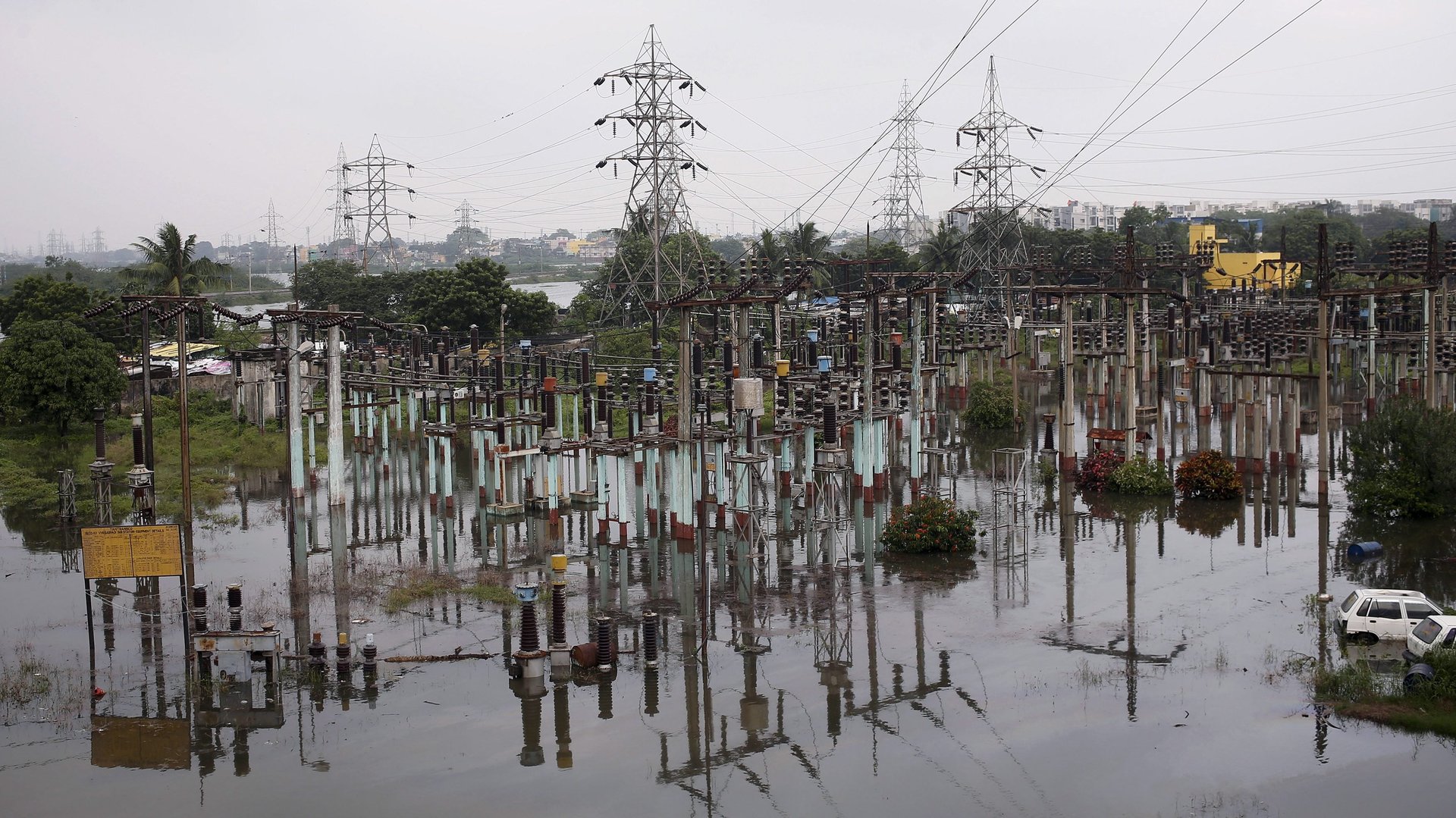Making coal pricier is a cheaper way to cut Indian emissions than pushing renewables
Putting a price on coal use is a cheaper way to lower carbon dioxide (CO2) emissions than India’s current policy of inducing states to buy electricity from renewable sources.


Putting a price on coal use is a cheaper way to lower carbon dioxide (CO2) emissions than India’s current policy of inducing states to buy electricity from renewable sources.
India’s newest renewable purchase obligations (RPOs), set by the national government last year, mandate power utilities to buy at least 21% of their electricity by 2022 from renewable sources such as solar and wind farms.
But a tax on carbon consumption or a carbon market for selling and buying permits will be more than 10 times cheaper in lowering CO2 emissions of the Indian economy, according to a new study by researchers at the Massachusetts Institute of Technology.
India has committed under the Paris climate agreement to lower the intensity of its CO2 emissions relative to GDP by at least 33% by 2030, compared to 2005 levels. The country has also pledged that the non-fossil fuel share of its power generation capacity will be at least 40% by 2030.
The researchers developed separate scenarios for 2030, one in which India relies on RPOs and another in which it uses a cap-and-trade system for CO2 emissions.
A carbon market is far cheaper because “producers have the flexibility to respond to a price on carbon with emissions reduction strategies that minimise their costs. This flexibility is constrained when electricity sector-specific targets are introduced through RPOs,” said Arun Singh, a co-author of the study.
“If renewable electricity costs are higher than the average cost of electricity, a higher share of renewables in the electricity mix makes electricity costlier, and the impacts of higher electricity prices reverberate across the economy, leading to higher welfare costs,” he added.
Mixed verdict on RPOs
RPOs give India a bigger push towards its target of achieving 40% power capacity from renewable sources. Even though states often miss their targets, the obligations do so, creates an additional demand for solar and wind power, pushing growth in a fledgling industry. Moreover, if prices of solar and wind energy keep falling, switching to these sources will cost utilities less, thus reducing the welfare loss associated with them, the study found.
While RPOs target decarbonisation in power generation, the overall consumption of coal does not proportionately decrease, but shifts to industries such as cement and steel which use it directly, the study says. A national cap on carbon emissions would prevent unchecked increase in coal consumption.
However, RPOs are also necessary to complement carbon pricing. Enforcing an adequate price on carbon emissions has been politically unfeasible across the world. But if India uses a cap-and-trade system alongside RPOs, the carbon price required to lower emissions to match Paris agreement goals will fall by nearly four times, the study says.